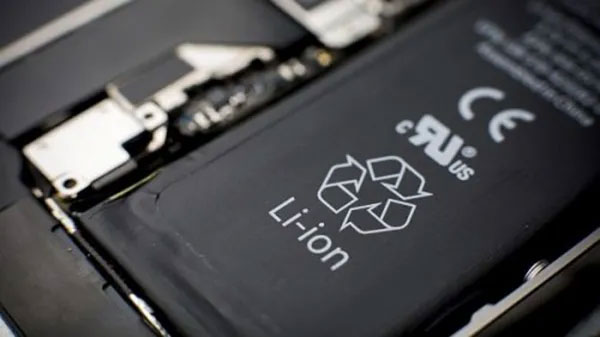We Need Safer Ways to Recycle Electric Vehicle and Mobile Phone Batteries.
Lithium-ion batteries are ubiquitous – found in laptops, TVs, mobile phones, electric vehicles, e-cigarettes, power tools, and even some greeting cards. In 2019, the global lithium-ion battery market was valued at $36.7 billion. By 2027, it is predicted to exceed $129 billion.
This energy storage technology is transformative for the clean energy sector, thanks to the high energy density of lithium-cobalt oxide. However, everything has its downsides; these energy sources are notorious for being volatile and can pose fire hazards, especially at the end of their life cycle. In recent years, lithium-ion batteries have caused catastrophic fires at recycling facilities in the United States, the United Kingdom, France, and China. Additionally, incidents of fire and explosions involving phones, laptops, and vehicles have occurred sporadically around the globe.

During collection and recycling, these batteries may go unnoticed in the trash.
In 2016, a horrific fire broke out at the Shoreway Environmental Center in San Carlos, California, causing $6.8 million in damages. The fire was attributed to improperly recycled lithium-ion batteries. They have also led to disasters at landfills and garbage trucks. It is estimated that the U.S. and Canada have incurred over $1.2 billion in damages due to lithium-ion battery fires.
The core issue arises with old lithium-ion batteries that have reached the end of their life and are thrown into the trash, transported to recycling facilities. During collection and recycling, these batteries may go unnoticed in the waste. They can be crushed, accidentally run over by loaders, or jostled on conveyor belts in waste facilities.
When the separator between the anode and cathode of a lithium-ion battery breaks, it triggers a thermal reaction that separates from lithium molecules. These molecules can then reach extremely high temperatures in a short time, igniting or exploding.
Studies have shown that compared to the number of lithium-ion batteries sold annually, not many are processed through electronic waste or hazardous waste systems for recycling. The exact number of lithium batteries thrown into trash bins remains unknown. Therefore, the significant challenge today is how to separate lithium batteries from the solid waste stream.
However, even after separating lithium batteries from solid waste, recycling these batteries presents a new challenge. It is very difficult to recover lithium and other rare metals like cobalt during the recycling process. Since 2021, battery manufacturers such as BYD, Toyota, and GM have been researching ways to make electric vehicle batteries more stable by using different metals like manganese, phosphate, and less cobalt. However, it is estimated that it could take 5 years to a decade before this technology is upgraded.
With existing battery recycling facilities, traditional processing methods are not efficient enough to extract high-quality lithium suitable for recycling. For example, thermal methods for recycling batteries are scalable and applicable to any type of battery, but they consume a lot of electricity during the melting process.
The remaining ash still contains reusable materials, but the method generates a significant amount of toxic smoke, potentially destroying recyclable materials. The chemical methods used to separate materials from batteries are both complex and selective in their applicability.
Another major obstacle lies in separating components of increasingly complex battery systems. Today’s batteries are a combination of multiple chambers, encapsulating individual battery cells; this is where the most valuable metals are hidden. While separating these cells is feasible, it remains cumbersome, and the process will need to be automated to achieve maximum efficiency.
Although the average lifespan of lightweight lithium-ion batteries is nearly 15 years, by 2030, it is estimated that at least 2,619,000 tons of lithium-ion batteries will need to be recycled. The recycling industry in the U.S. has established new plants with advanced technology and higher capacity to prepare for this increase.
While waiting for lithium battery recycling plants to operate more extensively, it is crucial to raise community awareness about the proper disposal of lithium batteries. Please note that disposing of old electronic products with lithium-ion batteries in recycling bins helps prevent fire accidents.

















































